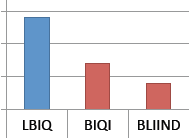Our setting in the paper is different from (in fact, more difficult than) the common setting used in other learning based image quality assessment methods.
For fair comparison with existing and emerging methods, we share share scores and the training/testing split using the common 80/20 split, and score on the TID dataset.
- New scores on LIVE (.mat)
This new result uses 80/20 split of training and testing, and achieves a Spearman correlation of 0.9056. Our CVPR paper used 50/50 training/testing splits and therefore reports a slightly lower performance.
- Scores on TID2008 (.mat)
This result was obtained from distorted images of all 17 distortion types. For each of the 1000 trials we ran, the model was trained on 1360 distorted images (20 original images) and tested on 272 distorted images (4 original image). The last 68 distorted images was excluded in the experiment because their reference image is not a natural image.
Our LBIQ measure achieves a Spearman correlation of 0.7432. As a reference, it is approximately the performance of VIF (rank 3 among many full-reference metrics), as reported by the website of TID2008 dataset.
|

